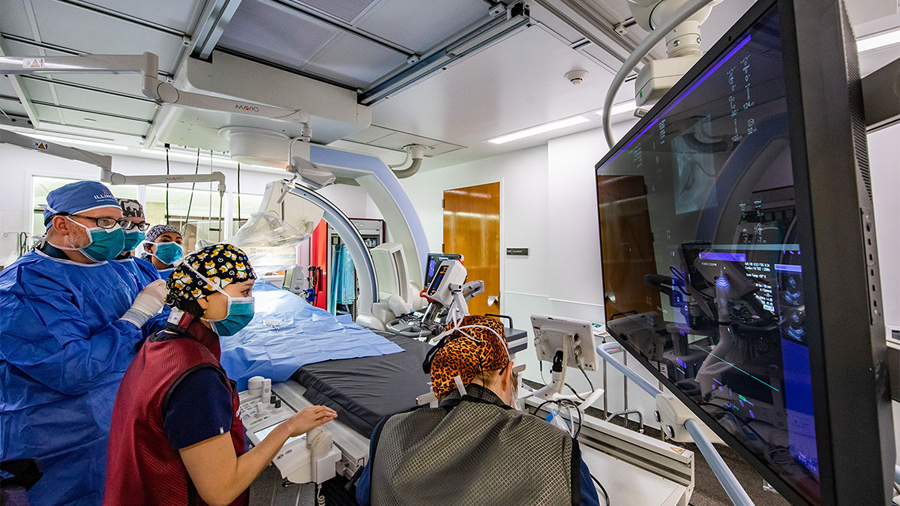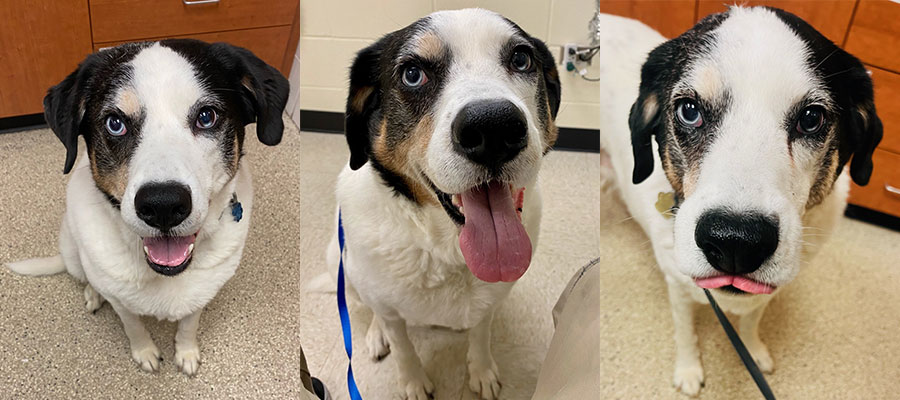Pets’ behavioral conditions affect the whole family
Dr. Kathy Tallering remembers the exact moment it began. The Chicago pediatrician was taking her then-four-year-old Portuguese water dog, Tucker, for a walk in their Lincoln Park neighborhood when “we got caught in one of those lovely Chicago flash thunderstorms.”
Their misfortune didn’t seem particularly significant at the time. However, “from that point on, he was deathly afraid of thunderstorms and the slightest change in the weather,” Dr. Tallering relates. “It got to the point where, if he even sensed a thunderstorm, he wouldn’t leave the house. My husband had to carry him to the curb to do his business.
“Tucker was just a wreck. His vet said it was one of the most extreme cases he had ever seen. It had the potential to shorten his life.”
Unfortunately, in our practice we frequently see owners who think it’s a training issue…. But this really is an emotional issue. When your dog is in a panic, no amount of training in the world will help them get through that. Dr. Kelly Ballantyne
The veterinarian referred Tucker to a veterinary behaviorist — specifically, to Dr. Kelly Ballantyne, a faculty member at the College of Veterinary Medicine who provides clinical services to pets and their families at the college’s Chicago headquarters in the Illinois Medical District, west of the Loop.
![[Tucker Tallering]](https://vetmed.illinois.edu/wp-content/uploads/2021/04/ps-tucker-inset.jpg) “We’re the psychiatrists and psychologists of veterinary medicine,” explains Dr. Ballantyne, of herself and other board-certified veterinary behaviorists. “We’re truly dealing with mental health issues in animals, especially companion animals.
“We’re the psychiatrists and psychologists of veterinary medicine,” explains Dr. Ballantyne, of herself and other board-certified veterinary behaviorists. “We’re truly dealing with mental health issues in animals, especially companion animals.
“Most of the pets we see come in with some sort of fear or anxiety disorder,” Dr. Ballantyne says. “Our goal is to help improve that pet’s mental state, improve the bond with human family members, and just help the pet live a better life. It has a huge impact on the family when pets are suffering. In this regard, behavioral conditions are no different from chronic medical conditions.”
The impact may have been particularly distressing for the Tallerings. Not only is Tucker the dream pet Kathy’s youngest daughter, Jenny, had longed for most of her life, but also the first dog that didn’t set off severe allergies in Kathy’s husband, Ken. “For the longest time we thought we could never get a dog,” says Dr. Tallering. “Now Tucker is a member of the family.”
They took Tucker to see Dr. Ballantyne the year after his life-altering thunderstorm, as his condition continued to worsen. While Dr. Ballantyne says studies indicate nearly half of all dogs are afraid of loud noises, “what Tucker was experiencing was technically a phobia, because it was such an intense fear,” she explains. “He’d started learning to associate weather changes and dark skies and just being outdoors at night with those scary events.
“Unfortunately, in our practice we frequently see owners who think it’s a training issue. ‘I just need to work on his training, and then my dog will be better.’ But this really is an emotional issue. When your dog is in a panic, no amount of training in the world will help them get through that.”
Dr. Ballantyne offered the Tallerings several practical solutions to help ease Tucker’s anxiety, such as increasing noise levels inside the home during thunderstorms or fireworks displays, and started him on a medication regimen. “When we have phobias in animals, anti-anxiety medications become an essential part of treatment,” Dr. Ballantyne says.
For the first year Tucker saw Dr. Ballantyne every two to three months, with Dr. Tallering talking to the behaviorist by phone between visits. Now, as Tucker approaches his ninth birthday, he sees Ballantyne only once a year for maintenance. The results, Dr. Tallering says, have been extraordinary.
![[Phoebe and Tucker Tallering]](https://vetmed.illinois.edu/wp-content/uploads/2021/04/ps-tucker-sister.jpg)
“To me, these are huge wins. We’ve worked really hard to get him to a good place. I’ve recommended Dr. Ballantyne to several of my friends.”
When Dr. Ballantyne graduated with her veterinary degree from the University of Illinois, “I had no intention of specializing,” she says. “But I discovered a lot of my clients were coming in with questions about their pet’s behavior. We encourage our clients to keep working with us, either every six or 12 months, just so we can keep tabs on the behavior. Because sometimes, circumstances change.”
—Jim McFarlin
Editor’s note: As of January 2019, Dr. Ballantyne no longer practices at the University of Illinois Chicago clinic.

![[Tucker Tallering]](https://vetmed.illinois.edu/wp-content/uploads/2021/04/ps-tucker-feature.jpg)


